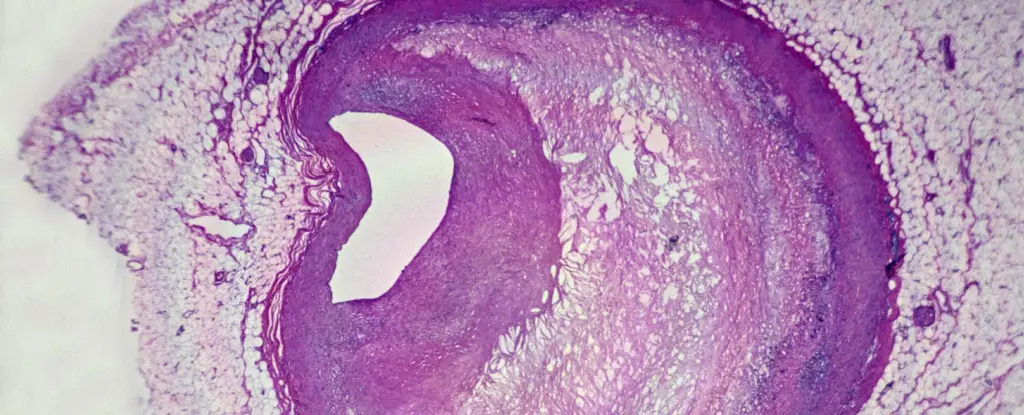In our quest for convenience and efficiency, humanity has inadvertently unleashed a monumental problem: microplastics. These minuscule particles, remnants of our plastic consumption, serve as a stark reminder of the costs of modern living. Recent studies have solidified fears that microplastics may invade even the most intimate quarters of our being—our very bodies. With their presence detected in organs like the lungs and liver, a new frontier has emerged, wherein these pollutants are implicated in escalating heart attack and stroke risks.
At the forefront of this alarming development is Dr. Ross Clark of the University of New Mexico, who has been tirelessly investigating the relationship between microplastics and vascular health. His presentations at conferences, such as the recent American Heart Association meeting, have underscored the disquieting realities surrounding microplastics. What makes this research pertinent is not just the prevalence of plastic but its seemingly sinister role in exacerbating cardiovascular diseases.
Plague of Plaque: The Evidence Grows
Dr. Clark’s research unveils a shocking revelation: arteries afflicted by fatty plaque are now characterized by a staggering accumulation of microplastics. In healthy individuals, traces of these particles are far less pronounced, with diseased arteries showing a jaw-dropping 16-fold increase. Even more alarming, patients who have suffered strokes or transient ischemic attacks present with 51 times more microplastics in their arterial plaque compared to healthy arteries. This stark contrast raises critical questions about what these particles might be doing within our bodies.
The implications are profound. Microplastics could potentially influence gene expression in ways that invite inflammation and worsen plaque stability. Dr. Clark’s investigative approach involved examining carotid artery samples from 48 individuals, discovering that the gene activity of immune cells was notably altered in high-plastic environments. This trend sends an undeniable signal: microplastics are not merely passive pollutants; they are active players in the pathological processes of cardiovascular diseases.
The Mystery of Microplastic Mechanisms
While Dr. Clark and his team have laid down a compelling foundation, the question of how microplastics affect vascular health remains largely unanswered. Although the presence of these tiny plastics is alarming, their precise biological impact needs thorough elucidation. Dr. Jaime Ross, a neuroscientist who reviewed the findings, expressed shock at the sheer magnitude of the differences observed, indicating that even a threefold increase in any pathological context is considered significant.
Given the complexity of human biology and the interplay of myriad factors contributing to heart disease, it is vital to adopt a cautious perspective regarding causation. While there is consensus that the presence of microplastics correlates with adverse health outcomes, establishing direct cause-and-effect relationships demands further investigation. Dr. Clark acknowledges the necessity for a more nuanced exploration of the genetic consequences of plastic exposure and aims to expand his research efforts, contemplating a variety of experimental approaches.
Innovative—Yet Imperfect—Methodologies
The journey to uncover the truth about microplastics and health has been fraught with methodological challenges. Clark’s team employed a robust technique, heating plaque samples to over 1,000 degrees Fahrenheit to separate and measure plastic components. While this method has provided insights, it is not devoid of limitations. The breakdown of lipids can produce substances that mimic the properties of polyethylene, complicating the accuracy of measurements.
Recognizing these challenges, Dr. Clark is actively seeking funding to enhance his research and investigate the dynamics between microplastics and immune cells further. His pioneering approach serves as a reminder that scientific progress often treads the fine line between discovery and uncertainty. With advances in technology and methodology on the horizon, the hope remains that clearer answers will emerge in the coming years.
The Path Forward: Urgency Meets Inquiry
As the implications of microplastics infiltrating the human body become increasingly apparent, the clarion call for action grows louder. Scientists like Dr. Clark are not merely documenting concerns; they are igniting inquiries into preventive measures that could mitigate these ominous risks. With cardiovascular disease remaining a leading cause of mortality worldwide, the intersection of environmental policies and public health has never been more critical.
Ultimately, the quest to understand and combat microplastics demands collaboration across disciplines, from basic research to public health policy. Collectively, society bears the responsibility to engage with this issue, fostering awareness and commitment to reducing plastic consumption and pollution. The knowledge we gather will be invaluable in developing concrete strategies aimed at protecting our health, preserving our ecosystems, and reshaping the legacy we leave for future generations.

